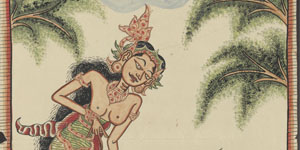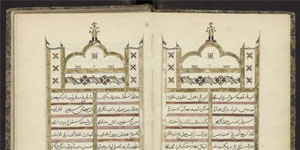Panji Tales Manuscripts
Included in the Unesco Memory of the World Register




On Panji tales
Panji stories relate the adventures of Prince Panji Raden Inu Kertapati and his sweetheart Candra Kirana who are separated and then must overcome many intricate hurdles before managing to reunite. There are many versions of this core tale with variations in locations, persons, and names. Metamorphoses, disguises, sex changes, and all sorts of supernatural events abound in the narratives. They are indeed essential elements of Panji tales.
From the earliest beginning of scholarly interest in Indonesia, Panji tales have been subject to academic studies because of their attractive literary and referential narratives. Apart from influencing many oral and written literatures, Panji tales were also influential in performing arts such as show plays (wayang) and dance drama such as gambuh on Bali.
Originating from East Java, the tales have been spread throughout Southeast Asia. They are found in at least twelve languages with Javanese-Balinese, Javanese, and Malay being the most numerous. But there are also texts in Balinese, Sasak (Lombok island), Buginese (South Sulawesi), Acehnese (North Sumatra), Sundanese (West Java), Thai, Vietnamese, Birmese (Myanmar), and Khmer (Cambodia). Panji manuscripts are kept in many major public and private collections over the globe. This is witness of their importance and international influence.
Panji tales are an excellent example of global mythical tales with a specific local content. Through its main theme, the intricate and utmost perilous quest of a prince to get his princess, it is evidently part of mythic global narratives such as found in the Indian and western world. The local aspects clearly show aspects of many Austronesian myths of origin.
On this website
This website has been started in July 2018 with digital copies of Panji manuscripts from Leiden University Libraries and will ultimately contain all of them, totaling over 260. The first batch of 100 manuscripts will already show the diversity of the collection. It will contain manuscripts written on palm leaves and on paper, both old and new, in eight languages: Javanese-Balinese, Javanese, Malay, Balinese, Sasak, Buginese, Acehnese, and Sundanese.
In our collection romanized transcriptions exist of several manuscripts. In those cases, this transcription is included in conjunction with the original manuscript to assist the reader.
To provide further context to the Panji tales, we will also include digital copies of published studies on Panji. As a matter of course, only copyright-free materials can be included.
We expect the first 100 manuscripts to be available mid-2019. Depending on available funding the remaining manuscripts will follow accordingly.